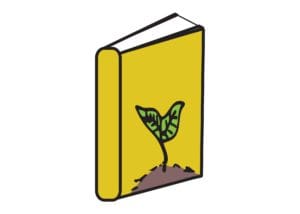إنشاء فصول دراسية خالية من الوصمة ومناهضة للتمييز والوصم
 يتعلم
يتعلم
The largest minority group in the U.S. is people with disabilities. Educate yourself on the ableist structures and common stigmas found within educational environments.
 يحاول
يحاول
If a student works with a 1:1 Paraprofessional and you’re giving an instruction to the student, make eye contact and directly speak to the student first, not assisting companions.
 يحاول
يحاول
Ask students with speech or hearing impairments for the modes of communication they are most comfortable with before beginning your lesson.
![]() تذكر
تذكر
Be intentional about introductions. How you introduce yourself and how you create opportunities for others to creatively introduce themselves and self-identify can set the tone for your time with students.
نصيحة:
تمامًا مثل الهويات ، لا يمكن دائمًا ملاحظة الإعاقات بسهولة. لديك وعي واحترام وحساسية لما قد لا يُرى.
The Impact of Ableism and Stigma Matter
Understanding ableism and stigma and its impact on individuals and classrooms empowers you to be a compassionate educator who preserves and protects the dignity and lived experience of students with disabilities. This awareness can also support you in advocating for the rights of disabled students in the school and beyond.
Ableism…
- isolates individuals;
- segregates learners;
- infects policymaking;
- emerges as structural and social discrimination.
كن منتبهاً لغتك
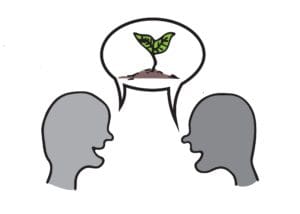
Image credit: Jean Wong
Words have power. The language you use can have an affect on an individual’s perception of themselves or others.
اللغة هي لغة لفظية وغير لفظية. غالبًا ما تتواصل لغة الجسد واللغة اللغوية أكثر مما نعبر عنه بالكلمات.
النبرة في صوتك لا تقل أهمية بالنسبة للمستمع مثل النبرة في كتابتك للقارئ. تعبر نبرتك عن موقفك واحترامك للطلاب الذين يراقبونك. كن حذرا من التسليم الخاص بك.
Learn more in the أعط دليل اللغة الشامل.
Be Conscious of Any Verbal Innuendo
“As you talk about someone with a mental illness, you may pair certain words with a change in your tone of voice. For example, you may whisper the terms depression or bipolar. People pick up on these cues, which communicate depression stigma to the listener.”—Melissa Pinto, PhD, RN
كن مقصودًا بشأن المقدمات
ضع في اعتبارك كيف تقدم نفسك وكيف تخلق الفرص للآخرين لتقديم أنفسهم والتعريف بأنفسهم.
سواء أكنت شخصًا ذا إعاقة أو غير معاق أو غير ذلك ، ففكر في تضمين ذلك كجزء من مقدمتك عندما تقابل الطلاب أو شركاء المدرسة ، كما هو مريح بالنسبة لك. دع الطلاب يعرفون أنك قد ترتكب أخطاء ، وتريد أن تعرف عنها ، وستتحمل مسؤولية إجراء التغيير ضمن ما تحت سيطرتك.
عندما تقدم نفسك لمجموعة جديدة من الطلاب:
- Choose what identities you’re comfortable sharing and what to prioritize.
- Consider how your introduction can open up communication and raise awareness about multiple identities and implicit bias. How can you normalize difference and destigmatize identities? What are the risks?
- اترك الوقت وكن مستعدًا للإجابة على الأسئلة التي قد تطرأ.
خطط لفرصة للطلاب لتقديم أنفسهم والتعبير ومشاركة كيفية تعريفهم بأنفسهم. ضع في اعتبارك في تخطيطك ما تفعله ولا تعرفه عن مجموعة الأشخاص وبيئة الفصل ومقدار الوقت الذي تقضيه مع الطلاب. ما هو مستوى الخطر الذي يبدو صحيحًا؟
Here are some sample activity ideas.
- Freewriting: “What you need to know about me is…”
- This can be further worked on to become an artist statement, poem, or other creative piece.
- Drawing/Painting: Invite students to draw or paint who they are or what they look like.
- It could be a literal self-portrait or more of an abstract interpretation.
- “I am from…” or other similar prompts can be used across disciplines.
- Creative movement: Invite students to introduce themselves with a physical gesture.
- ادعُ الطلاب للاختيار والمشاركة حول فنان أو عمل فني يتعرفون عليه ولماذا.
- ادعُ الطلاب لاختيار هوية واحدة كمصدر إلهام لقطعة فنية سيقومون بإنشائها بشكل فردي أو في مجموعات ، لإيجاد طرق لتمثيل ما هو مهم لكل منهم.
Explore more in the GIVE التقاطع بين الإعاقة وموارد الهويات الأخرى.
كن متواصلًا واعيًا في الفصل الدراسي.
| يفعل | لا تفعل |
|---|---|
| قم بالاتصال بالعين وتحدث مباشرة مع الطالب أولاً ، وليس مساعدة رفيق. | الاعتماد على مدرس الفصل أو المحترف المساعد لترجمة التواصل مع الطالب. |
| اسأل الطلاب الذين يعانون من إعاقات في الكلام عن طرق الاتصال الأكثر راحة لهم. | خمن ما يحاول الطالب التعبير عنه لفظيًا أو جسديًا. بدلاً من ذلك ، اطلب التوضيح. |
| استخدم لغة ونبرة محترمة وعادية مع الطلاب لمساعدتهم على الشعور بالاندماج في المجتمع. | افترض أن الطالب لا يمكنه فهم التعليمات الأساسية ما لم يكن لديك إشارة واضحة. |
Plant Seeds of Confidence and Self-Esteem by Trusting That Students Are Able
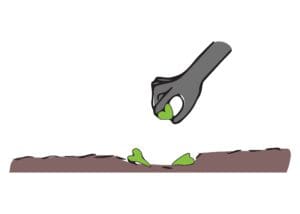
Image credit: Jean Wong
Lead With Empathy
Try to set aside preconceived notions about your students and be open to newness and possibility. Developing a genuine appreciation for each unique student and their individual lives creates limitless opportunities for empathy.
الحقوق السبعة للجسد
These seven rights to the body are a consensus of shared values gathered from Eastern and Indigenous philosophy, religious beliefs, and human rights organizations. You can use these rights as a pedagogical guide to create a safe space for all learners and empower them to be advocates for themselves.
- The Right to be Present—to exist in any space.
- The Right to Feel—to experience and express emotions.
- The Right to Act—to express yourself in your own way.
- The Right to Love and be Loved—to lead with your heart.
- The Right to Speak—to articulate yourself in a verbal or nonverbal way.
- The Right to See—to notice or sense your own way.
- The Right to Know—to understand.
Question What You Have Accepted to Be True
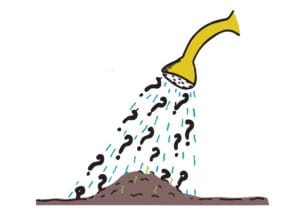
Image credit: Jean Wong
“People may assume someone with depression or another mental illness is unstable, lazy, untrustworthy, unintelligent, or incapable, when that’s not the case.”—Mary Pender Greene, LCSW-R
تحقق من افتراضاتك
It is easy to enter a classroom and assign labels to student behaviors. Faultily attributing a child’s performance to a lack of interest or general ineptness can be an impediment to trust in your instruction and their ability to learn. It can also unwittingly hurt your chance of developing positive relationships with students. In addition, Black, non-white, and female students with disabilities receive disciplinary actions more than white male students with these disabilities.
Learn more in the GIVE مورد لتطوير العلاقات الإيجابية بين الطلاب.
اعتنق الغموض
من المقبول ألا تكون السلطة في موضوع ما. في الفصل الدراسي ، يكون التصميم المتمركز حول الطالب في الخيال التعاوني. عندما نتحرر من الحاجة إلى التحكم في النتيجة ، فإننا نوفر مساحة للابتكار.
خذ وقتًا في التأمل الذاتي
- How do I currently talk around and about people with visible and invisible disabilities?
- ما هي الممارسات اللغوية التي تحترم هذه المجتمعات؟
- ما هي الممارسات اللغوية التي تجعل هذه المجتمعات مرضية؟
- Have I depended on the Classroom Teacher or the Paraprofessional for translating communication with the student, or handling a student I don’t feel comfortable interacting with?
- كيف حُرمت من حقوقي السبعة في تجربتي الحياتية كفنان أو كفرد؟
- كيف شاهدت الطلاب وهم يحرمون من حقوقهم في الفصل؟
- كيف حرمت الطلاب من حقهم في الجسد في التيسير أو فنهم؟
- إذا عرفنا الإجابة عندما بدأنا ، فما الذي يمكن أن نتعلمه؟
- كيف يمكننا التوصل إلى حلول إبداعية؟
- إلى أين يرشدنا الأشخاص الذين نصممهم؟
Create Equality Between All Students
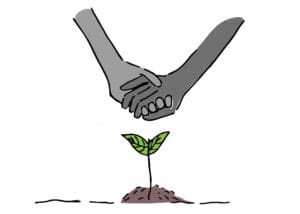
Image credit: Jean Wong
اضبط بعيدًا عن الافتراضات التي تم إجراؤها حول الطلاب
Take a moment to check or notice assumptions in the language used around or about your students, or in any actions taken, and make adjustments as necessary.
- Instead of: “He cannot sit still and pay attention long enough to do anything.”
- Try: “How can we make the activity more physically engaging for everyone?”
- Instead of: “She can’t read out loud. She’s too slow.”
- Try: “Let’s give her time and support while she reads.”
- بدلا من: “I don’t think he can be the lead. The audience may get uncomfortable seeing him and hearing him like that.”
- Try: “Let’s give him the lead. If he feels like he needs a buddy to do parts of the scene, we can split the role.”
- Instead of: “You may not be able to do this activity; you can be our audience.”
- Try: “Would you like to try this activity? If so, we’ll support you.”
- Instead of: “I don’t know what is wrong with her. She is just so disruptive and shouldn’t participate.”
- Try: Avoid singling out students with these disabilities before entering the room. Design lesson plans that include moments for emotional literacy, journaling, and exploration as a first step. Introduce tools and spaces for self-regulation or support on the first day.
Work Toward Educational Equity
Our culture is filled with ableist representations and ideas that inform all of our lives. What assumptions do you make about
- what a student is capable of?
- how a student speaks or communicates?
- how a student uses their body?
- what a “good student” looks like?
- what it means or looks like to try or work hard?
- what it means or looks like to be actively listening?
- whether someone is the “right fit” for an activity or role?
- how a student might feel if they try something and fail?
- what an audience will expect a performer to look/sound like?
How can you use your content, language, and the art you share to move away from assumptions and toward educational equity for your students?
فنانون في محادثة حول وصمة العار
ميسون زايد, Comedian, Actress, Disability Advocate, and Tap Dancer
“‘I have cerebral palsy. I shake all the time,’ Maysoon Zayid announces at the beginning of this exhilarating, hilarious talk. (Really, it’s hilarious.) ‘I’m like Shakira meets Muhammad Ali.’ With grace and wit, the Arab-American comedian takes us on a whistle-stop tour of her adventures as an actress, stand-up comic, philanthropist, and advocate for the disabled.” This talk was presented at an official TED conference. TEDWomen 2013.
آدم بيرسون, Broadcast Journalist, Actor, Advocate, and Motivational Speaker
"سيشارك آدم الدروس المهمة التي تعلمها أثناء قيامه بمهنة لنفسه في نظر الجمهور ، بينما يتغلب على الوصمة المرتبطة بتشوهاته" تم تقديم هذا الحديث في مؤتمر TED رسمي. TEDxBrighton 2017.
ليندسي أبرومايتيس سميث, Artist, Writer, and Healer
“I am most proud of the fact that I am still thriving despite my body becoming differently abled. I think my best work has come out of pushing against my limitations.”
كانت Lindsay Abromaitis-Smith تصنع الفن طوال حياتها. قبل تشخيص إصابتها بمرض التصلب الجانبي الضموري في عام 2012 ، عملت ليندسي كفنانة عرائس ونحات ومعالج تدليك. على الرغم من أنها لم تعد تستخدم ذراعيها ويديها ، إلا أنها تواصل التعبير عن نفسها بشكل خلاق باستخدام قدميها للرسم.
“Living with ALS is the most difficult thing I have ever done. It has given me so many opportunities to slow down, figure out what is important to me, and shift my perspective on the world.”
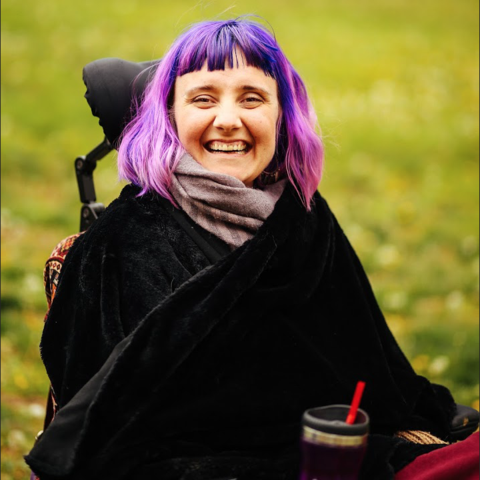
Learn more about featuring artists with disabilities in the GIVE Resource: Inclusive Curriculum and Showcasing Artists with Disabilities.

